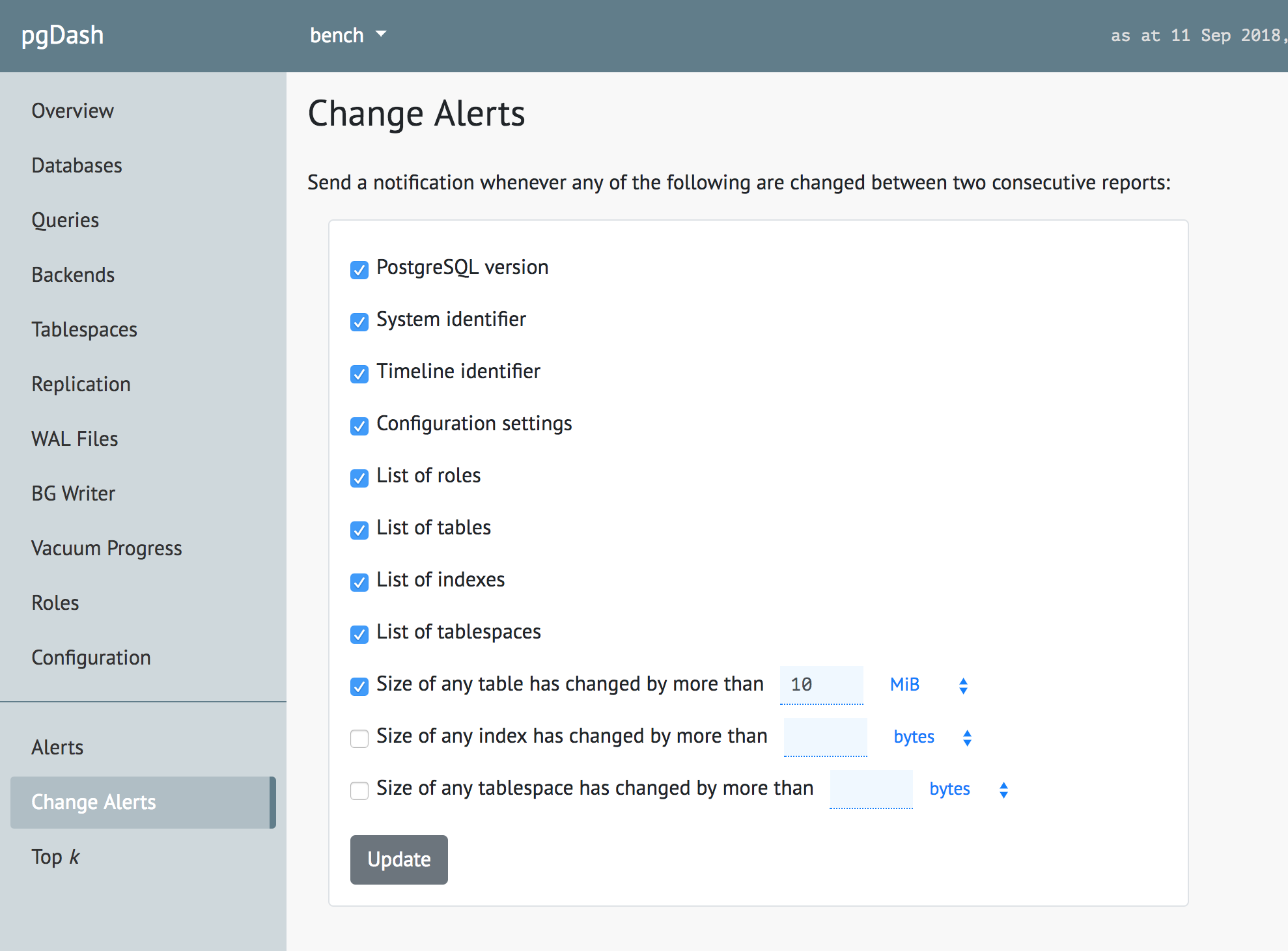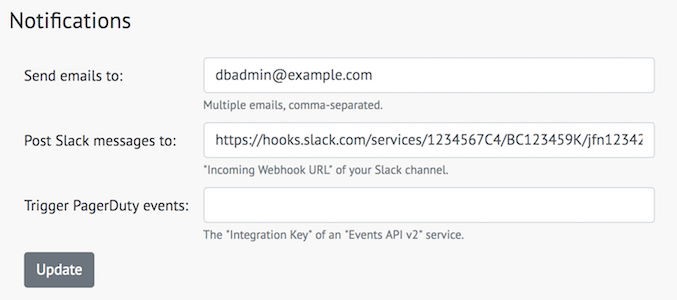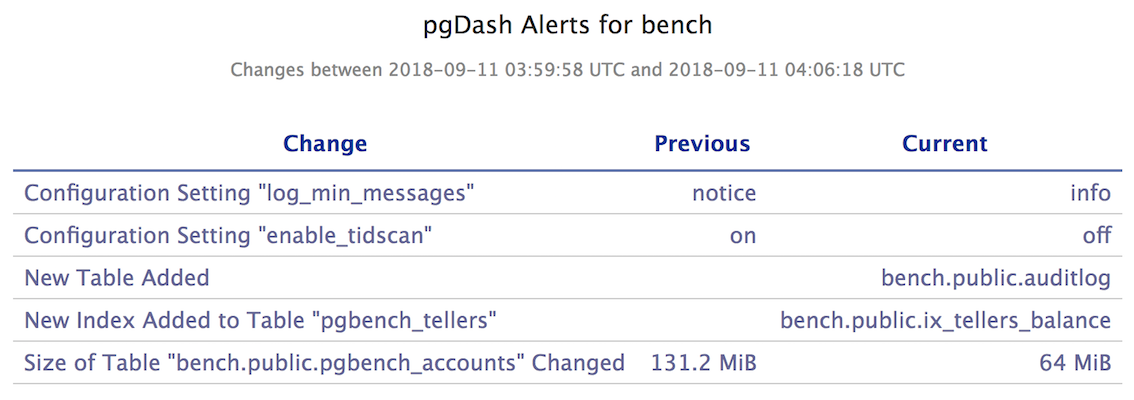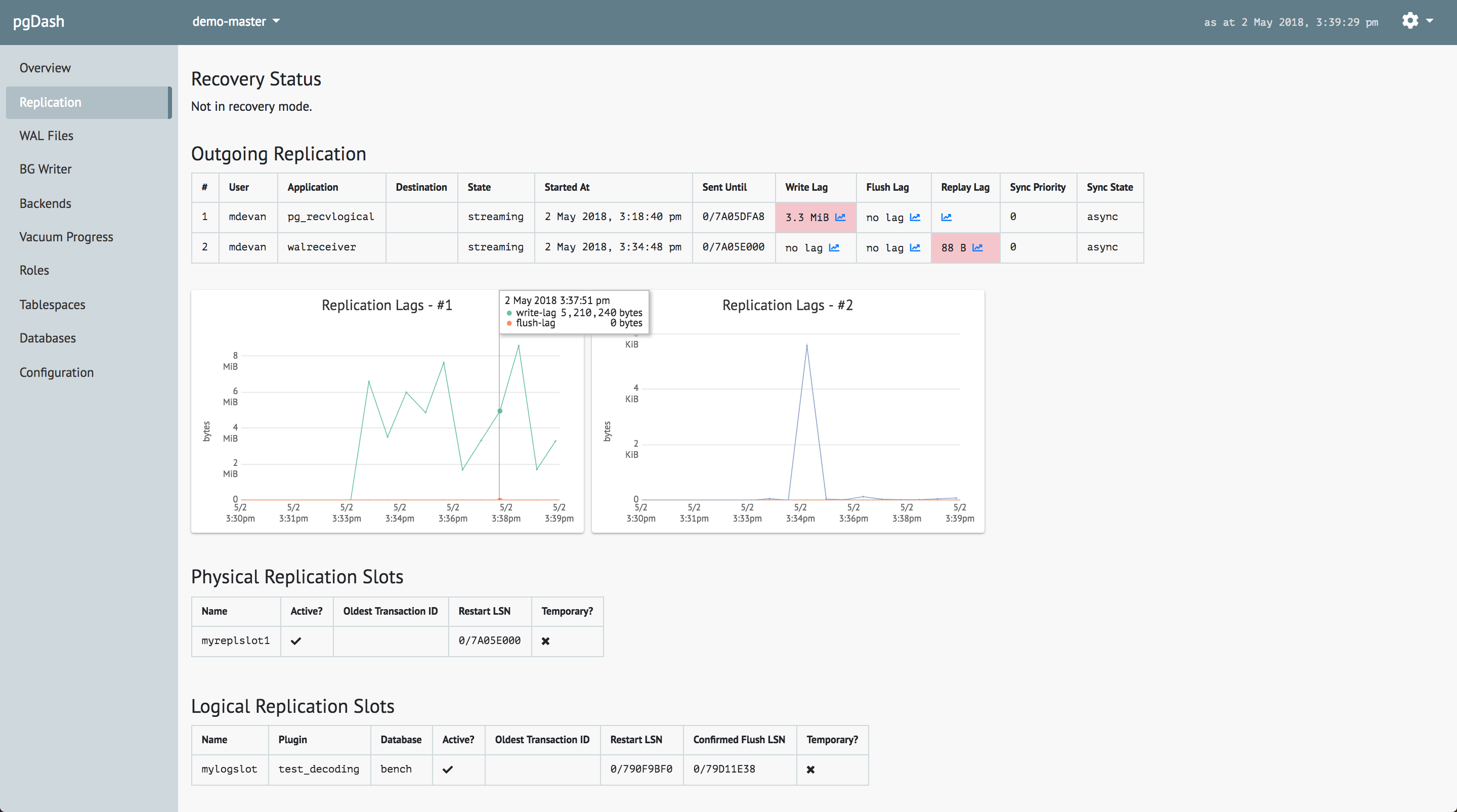We are pleased to announce that the Change Alerts feature is now available in pgDash!
Change alerts allow you to stay informed about important changes to your PostgreSQL databases, like addition or deletion of users, tables, indexes, or abrupt increases or decreases in table size, and more. While regular alerts are based on thresholds (like table size exceeding a certain limit), change alerts are based on the difference between two consecutive reports. When change alert rules are set, pgDash will check every incoming report against the previous one.
Change alerts are designed to keep you informed of any major change happening to your fleet of databases. They can catch unplanned upgrades, restores, schema modifications and rogue scripts inserting or deleting data. They can also be used to detect security concerns like creation of new users or modification of users (change of privileges, group membership).
Change alerts can be set from the pgDash UI. Notifications can be sent to email addresses, Slack channels and PagerDuty.
The Change Alerts feature is available in the Pro and Enterprise versions of pgDash SaaS and self-hosted / on-premise.
Setting Change Alerts
Select the changes you would like to be alerted about from the pgDash UI.
Send notifications via email, Slack channels and PagerDuty. Use the panel at the bottom of the same Change Alerts page to set the destinations:
Notifications
When an alert has been triggered, you will get notifications that look something like this:
About pgDash
pgDash is a modern, in-depth monitoring solution designed specifically for PostgreSQL deployments. pgDash shows you information and metrics about every aspect of your PostgreSQL database server, collected using the open-source tool pgmetrics.
pgDash provides core reporting and visualization functionality, including collecting and displaying PostgreSQL information and providing time-series graphs, detailed reports, alerting, teams and more.




